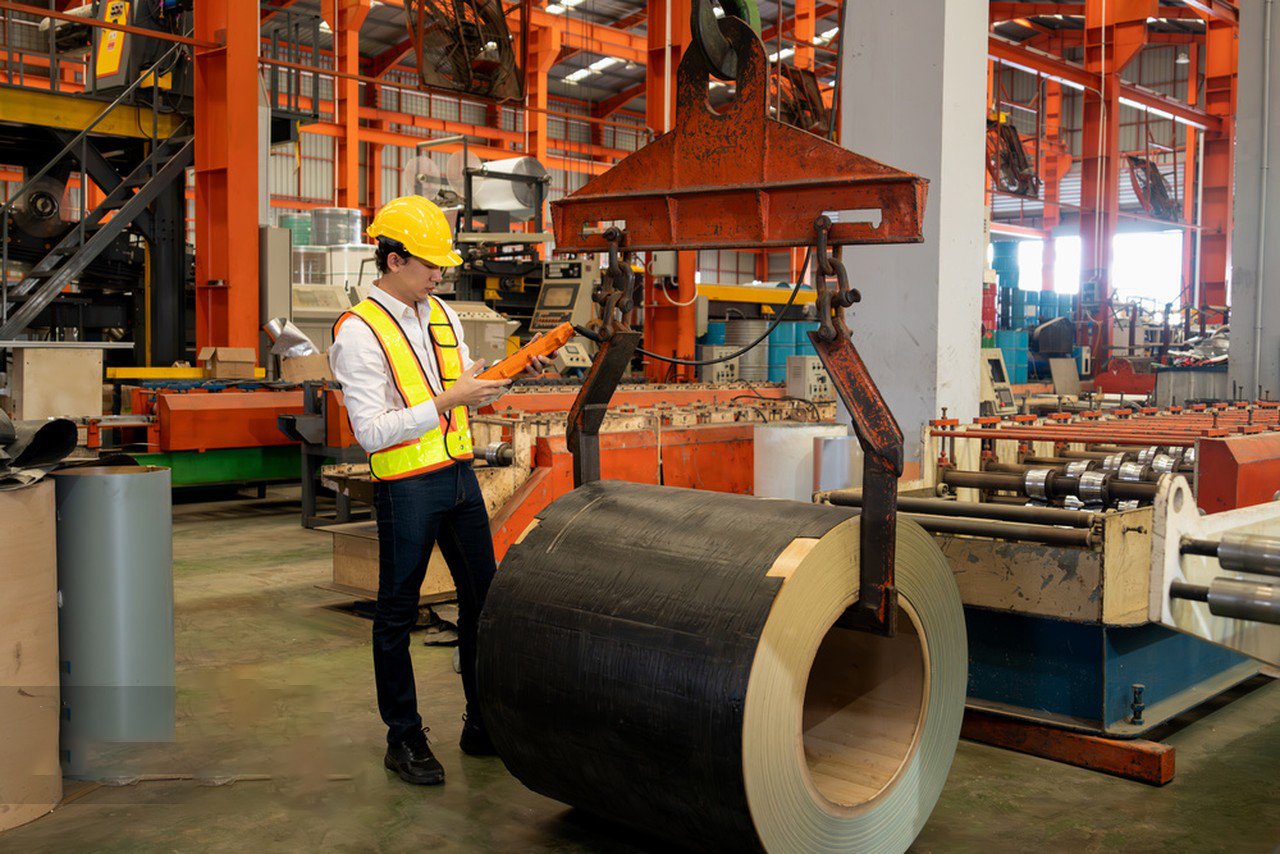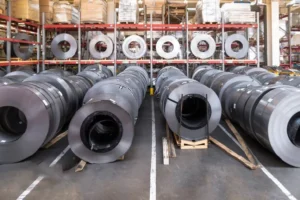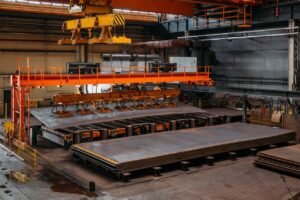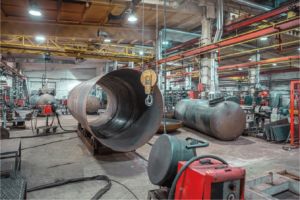Диапазон толщины листов нержавеющей стали и допуски
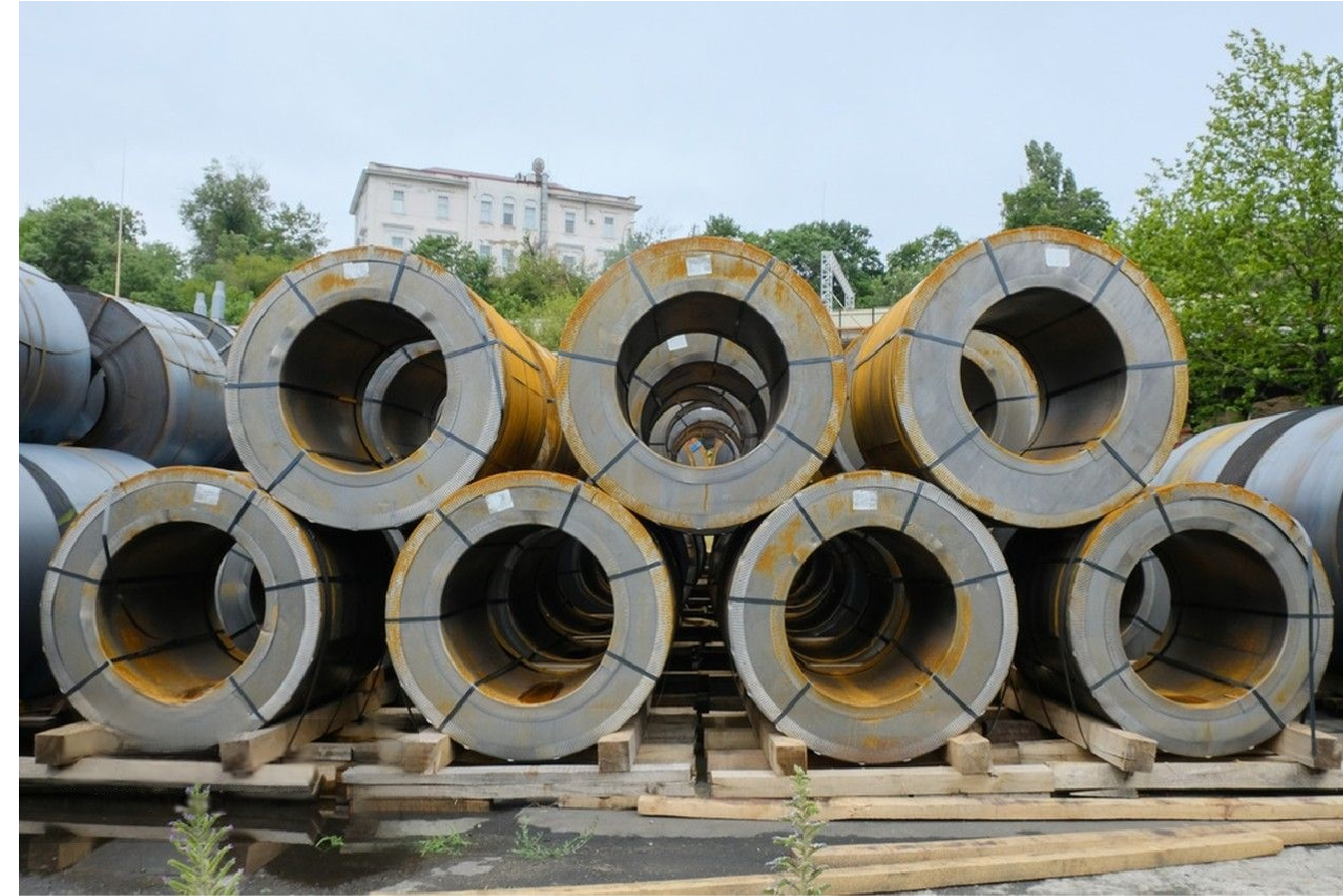
Вы сталкиваетесь с несоответствием толщины листа нержавеющей стали, которое нарушает производственный процесс и увеличивает затраты? Такая нестабильность может привести к браку и задержкам в реализации проектов, что негативно скажется на вашей прибыли. Понимание диапазонов толщины и допусков, которым мы уделяем первостепенное внимание в MFY, - это ваш первый шаг к надежности материала.
Диапазон толщин листов из нержавеющей стали означает спектр доступных стандартных толщин, а допуски определяют допустимое отклонение от номинальной толщины. И то, и другое имеет решающее значение для обеспечения пригодности материала, взаимозаменяемости и контроля качества в бесчисленных областях применения в различных отраслях промышленности, от производства до строительства.
Навигация по спецификациям листов из нержавеющей стали, особенно по толщине и ее допускам, является одним из основных аспектов моей работы в качестве директора по глобальному бизнесу в компании MFY. Эта тема ежедневно оказывает непосредственное влияние на наших клиентов. Данное руководство расскажет об этих важнейших параметрах и поможет вам сделать более обоснованный выбор материала для ваших проектов.
Точность толщины листа нержавеющей стали - это не просто техническая деталь; это краеугольный камень качества продукции, эффективности производства и целостности конструкции. В отрасли, где "достаточно близко" не является достаточно хорошим, отклонения за пределами допустимых допусков могут привести к каскадным проблемам - от плохо подогнанных компонентов на сборочной линии для интегратора оборудования в России до ухудшения характеристик конструкции в строительном проекте на Ближнем Востоке. В компании MFY наша приверженность строгому контролю качества и использование интегрированной цепочки поставок от сырья до готовой продукции гарантирует, что мы поставляем листы, которые соответствуют строгие международные стандарты1. Этот фокус рождается из понимания реальных затрат на несоответствие - урок, которым поделился клиент-производитель из Индии, сокративший количество переделок на 15% после перехода на листы MFY с более жестким и надежным контролем толщины.
Введение в стандарты толщины листов из нержавеющей стали
Чувствуете себя потерянным в море различных спецификаций толщины листа из нержавеющей стали от разных поставщиков или регионов? Такая путаница может привести к дорогостоящим ошибкам при закупках и несоответствию проектов. Ознакомление с установленными международными стандартами, такими как ASTM, EN и JIS2 очень важна для ясности и последовательности.
Стандарты толщины листов из нержавеющей стали - это признанные во всем мире технические условия, такие как ASTM A480/A480M, EN 10029 или JIS G4305. Эти документы определяют номинальную толщину, допустимые отклонения (допуски) и другие параметры качества, чтобы обеспечить согласованность материалов, облегчить международную торговлю и гарантировать соответствие назначению.
Мир нержавеющей стали регулируется стандартами, которые обеспечивают качество, безопасность и совместимость. Для листов из нержавеющей стали стандарты толщины имеют первостепенное значение, формируя фундамент доверия между поставщиками, такими как MFY, и нашими разнообразными клиентами, включая производственные компании, инженерные подрядчики и дистрибьюторов. Эти стандарты не произвольны, они являются результатом десятилетий металлургической науки, производственного опыта и международного сотрудничества. Когда MFY экспортирует листы из нержавеющей стали на такие рынки, как Индия, Юго-Восточная Азия или Ближний Восток, соблюдение этих всемирно признанных стандартов (таких как ASTM, EN или JIS, в зависимости от требований клиента) не подлежит обсуждению. Я вспоминаю проект с инженерным подрядчиком в Юго-Восточной Азии, который первоначально осуществлял закупки у местного поставщика, придерживающегося менее строгих региональных стандартов. Они столкнулись с серьезными проблемами при подгонке сборных модулей из-за несоответствия толщины листов. После перехода на MFY, где мы поставляли материал, строго соответствующий указанным ими стандартам EN, проблемы со сборкой резко сократились, что подчеркивает ощутимые преимущества стандартизированного, надежного материала. Этот опыт подчеркивает, почему твердое понимание этих стандартов имеет решающее значение для всех, кто заказывает или использует листы из нержавеющей стали.
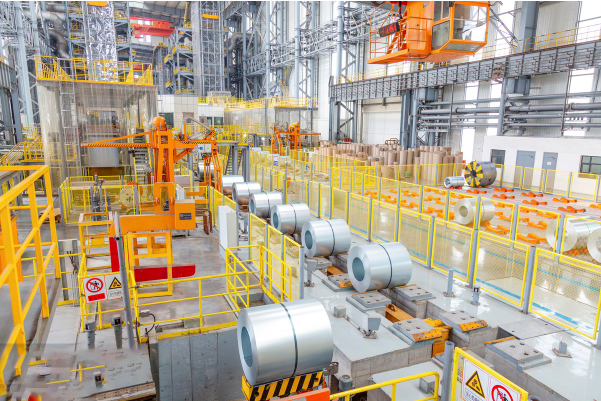
Концепция стандартизированной толщины листов из нержавеющей стали является основополагающей для современной промышленности, обеспечивая глобальную торговлю, гарантируя качество продукции и предоставляя общий язык для инженеров, производителей и поставщиков. Без этих стандартов царил бы хаос: каждый производитель мог бы предлагать разные определения толщины, превращая проектирование, закупку и изготовление в кошмар. В MFY мы глубоко вовлечены в цепочку поставок нержавеющей стали, от торговли сырьем до обработки и экспорта холоднокатаного проката, поэтому мы ежедневно работаем в рамках этих международных стандартов. Наши клиенты, будь то крупные производственные компании в Индии или интеграторы специализированного оборудования в России, зависят от последовательности и надежности, которые гарантируют эти стандарты. В этом разделе мы рассмотрим исторический контекст этих стандартов, изучим ключевые международные организации и их соответствующие спецификации, а также проанализируем их глубокое влияние на глобальное производство и торговлю. Понимание этой истории имеет не только академическое значение; оно необходимо всем, кто занимается выбором, обработкой или использованием листов из нержавеющей стали, поскольку напрямую влияет на характеристики материала, стоимость проекта и общее качество. Я лично видел, как общее понимание, например, допусков ASTM A480/A480M может упростить общение и предотвратить недоразумения между нашей командой MFY и клиентом, планирующим критически важное производство.
Эволюция и цель стандартизации
Путь к стандартизированным спецификациям материалов, включая спецификации толщины листа из нержавеющей стали, - это история развития промышленности. На заре сталелитейного производства разнообразие было огромным. Отсутствие согласованности создавало серьезные проблемы для инженеров и производителей, которым требовались предсказуемые свойства материалов для своих конструкций и процессов. Основным стимулом к стандартизации послужила необходимость обеспечения безопасности, особенно в строительстве и производстве сосудов под давлением, где отказ материала мог привести к катастрофическим последствиям. По мере развития промышленности и международной торговли потребность во взаимозаменяемости деталей и честной коммерческой практике еще больше подтолкнула к разработке общих стандартов. Такие организации, как ASTM International3 (основанное в 1898 году как Американское общество по испытаниям и материалам), Европейский комитет по стандартизации (CEN) и Японский комитет по промышленным стандартам (JISC) стали ключевыми игроками в этом начинании.
Основная цель этих стандартов на толщину листа из нержавеющей стали многогранна. Во-первых, они дают четкое определение того, что представляет собой конкретная номинальная толщина и допустимый диапазон отклонений (допуск). Это позволяет проектировщикам с уверенностью указывать материал, зная, что листы, полученные с разных авторитетных заводов, придерживающихся одного и того же стандарта, будут сопоставимы. Во-вторых, стандарты облегчают контроль качества на протяжении всего производственного процесса. Такие комбинаты, как MFY, используют эти стандарты в качестве ориентиров для своих систем производства и контроля качества. Например, наши станы холодной прокатки откалиброваны для производства листов с жесткими допусками, предусмотренными, например, стандартом EN 10088-2 для листов из нержавеющей стали общего назначения или ASTM A240/A240M для листов, листов и полос из хромистой и хромоникелевой нержавеющей стали для сосудов под давлением и для общего применения.
Наконец, эти стандарты незаменимы для мировой торговли. Обеспечивая общий технический язык, они снижают торговые барьеры, позволяя таким компаниям, как MFY, уверенно экспортировать листы из нержавеющей стали на различные рынки, такие как Индия, Юго-Восточная Азия и Ближний Восток, зная, что наша продукция соответствует международно признанным уровням качества. Это уменьшает количество споров, упрощает закупки для наших клиентов (например, дистрибьюторов и трейдеров) и способствует повышению эффективности глобального рынка. Эволюция продолжается, стандарты регулярно пересматриваются и обновляются с учетом достижений в области производственных технологий и меняющихся потребностей отрасли, и MFY активно следит за этим процессом, чтобы наша продукция всегда соответствовала самым современным требованиям.
Ключевые международные стандарты (ASTM, EN, JIS)
Толщина и допуски листов из нержавеющей стали определяются несколькими международно признанными стандартами, среди которых наиболее известными являются ASTM, EN и JIS. Международные стандарты ASTM, широко используемые в Северной Америке и влиятельные во всем мире, включают такие спецификации, как ASTM A480/A480M, в которых изложены общие требования к плоский прокат из нержавеющей и жаропрочной стали, лист и полоса4включая допуски по толщине. Например, для холоднокатаных листов ASTM A480/A480M устанавливает допуски по толщине и ширине. Типичный допуск для листа толщиной 1,00 мм и шириной 1219 мм может составлять ±0,08 мм. MFY часто производит материал в соответствии с этими стандартами ASTM для клиентов на рынках, которые следуют американским спецификациям, или для конкретных требований проекта.
Европейские стандарты (EN), разработанные CEN, являются обязательными в странах-членах ЕС и широко приняты во многих других регионах, включая некоторые из ключевых экспортных рынков MFY. Основные стандарты EN для листов из нержавеющей стали включают EN 10088-2 (для общих целей) и EN 10029 (для горячекатаных листов толщиной 3 мм и выше, с указанием допусков по толщине). Стандарты EN часто имеют несколько иные диапазоны допусков и классификацию толщины по сравнению с ASTM. Например, EN 10088-2 может классифицировать допуски на основе диапазонов номинальной толщины, и значения могут отличаться. Лист толщиной 1,00 мм по стандартам EN может иметь допуск ±0,06 мм для более жестких вариантов, что демонстрирует различия между системами. Наши производственные мощности умеют производить продукцию в соответствии со спецификациями EN, обеспечивая соответствие европейским клиентам и проектам, в которых указаны эти нормы.
Японские промышленные стандарты (JIS), такие как JIS G4305 для холоднокатаного листа, листовой и полосовой нержавеющей стали, преобладают в Японии и влияют на многие азиатские рынки, включая части Юго-Восточной Азии, где MFY имеет сильное присутствие. Стандарты JIS также имеют свои уникальные таблицы допусков. Для листа толщиной 1,0 мм в стандарте JIS G4305 может быть указан допуск, например, ±0,07 мм. Несмотря на значительное совпадение целей этих стандартов в области качества, конкретные числовые значения допусков и иногда даже способ определения диапазонов толщины могут различаться. Это требует тщательного анализа контрактных спецификаций как поставщиком (MFY), так и клиентом (например, производственной компанией или инженерным подрядчиком) для обеспечения взаимопонимания и соответствия. Техническая команда MFY имеет опыт интерпретации и производства в соответствии со всеми этими основными международными стандартами, что является ключевой частью нашего глобального бизнеса.
Влияние стандартов на мировую торговлю и производство
Существование и повсеместное принятие международных стандартов на толщину листа из нержавеющей стали оказывает глубокое и в основном положительное влияние на мировую торговлю и производство. Для таких компаний, как MFY, которые экспортируют значительную часть своей продукции из нержавеющей стали (рулоны, листы, трубы) на различные международные рынки, эти стандарты являются основой коммерции. Они обеспечивают общий, поддающийся проверке эталон качества и производительности. Когда индийский клиент-производитель заказывает у MFY листы из нержавеющей стали с указанием соответствия ASTM A480/A480M, обе стороны имеют четкое, однозначное представление об ожидаемой толщине и допусках. Это значительно снижает риск возникновения споров, связанных со спецификациями материалов, упрощает процесс проверки по прибытии и укрепляет доверие.
В производстве стандартизированные толщины и допуски позволяют повысить предсказуемость и эффективность. Например, интеграторы оборудования могут проектировать машины с точными зазорами для компонентов из нержавеющей стали, будучи уверенными, что листы, полученные от любого авторитетного поставщика и соответствующие указанному стандарту, подойдут. Такая взаимозаменяемость крайне важна для массового производства и сложных сборочных операций. Если бы допуски не были стандартизированы, производителям пришлось бы постоянно вносить коррективы в свои процессы или рисковать высоким процентом брака компонентов. Я вспоминаю одного клиента, который производит оборудование для коммерческих кухонь; они полагаются на постоянную толщину листов MFY марки 304, чтобы обеспечить бесперебойную работу автоматизированных процессов гибки и сварки, минимизируя корректировки и максимизируя производительность.
Кроме того, стандарты часто стимулируют совершенствование производственных возможностей. Чтобы соответствовать все более жестким допускам, требуемым некоторыми стандартами или конкретными областями применения (например, аэрокосмическая промышленность, прецизионная электроника), предприятия вынуждены инвестировать в более совершенные технологии управления технологическими процессами и системы менеджмента качества. Это приносит пользу всей отрасли, повышая планку качества. Хотя между стандартами существуют незначительные различия, как показано в приведенной ниже концептуальной таблице, общая тенденция направлена на гармонизацию или, по крайней мере, взаимное признание, что способствует дальнейшему развитию мировой торговли. Стремление MFY соответствовать этим разнообразным мировым стандартам отражает наше стремление стать ведущим международным торговым и сервисным брендом в китайской индустрии нержавеющей стали.
| Стандартная семья | Типичная номинальная толщина (мм) | Пример концептуального допуска (мм) для листа толщиной 1,5 мм | Основной регион происхождения/использования |
|---|---|---|---|
| ASTM | например, 0,5, 1,0, 1,2, 1,5, 2,0 | ±0,10 (иллюстрация) | Северная Америка, Глобальный |
| EN | например, 0,5, 0,8, 1,0, 1,5, 2,0 | ±0,08 (иллюстрация, может быть более жесткой) | Европа, Глобальный |
| JIS | например, 0,5, 0,8, 1,0, 1,2, 1,5 | ±0,09 (иллюстрация) | Япония, Азия |
Примечание: Данная таблица является иллюстративной. Фактические допуски сложны и зависят от конкретного сорта, ширины и стандартного исполнения. Всегда обращайтесь к конкретному стандартному документу.
Стандарты ASTM широко используются во всем миреПравда
Стандарты ASTM были разработаны в Северной Америке, но стали влиятельными во всем мире, в том числе и на экспортных рынках MFY.
Стандарты JIS идентичны стандартам ENЛожь
Хотя оба стандарта являются строгими, JIS и EN имеют разные таблицы допусков и классификации толщины.
Современные промышленные методы измерения толщины листа и допусков
Полагаетесь ли вы на устаревшие или непоследовательные методы проверки толщины листа нержавеющей стали, что приводит к потенциальному снижению качества? Это может привести к дорогостоящим переделкам или неудовлетворенности клиентов. Использование современных, калиброванных измерительных инструментов и надежных процедур, как это практикуется в компании MFY, имеет решающее значение для обеспечения качества.
Современная промышленная практика измерения толщины листа нержавеющей стали и проверки допусков включает использование калиброванных ручных микрометров для выборочного контроля, ультразвуковых толщиномеров для неразрушающего контроля и современных поточных автоматизированных систем, таких как рентгеновские или лазерные толщиномеры на прокатных станах для непрерывного контроля.
В современном производстве, ориентированном на точность, точное измерение толщины листа нержавеющей стали и обеспечение соблюдения заданных допусков - это не просто хорошая практика, это производственная необходимость. В компании MFY протоколы обеспечения качества построены на надежных методах измерения, что отражает наше стремление поставлять продукцию, соответствующую строгим стандартам наших клиентов, от инженерных подрядчиков в России, которым требуются материалы для критически важной инфраструктуры, до производителей в Юго-Восточной Азии, выпускающих потребительские товары в больших объемах. Применяемые методы варьируются от традиционных, но надежных ручных инструментов до сложных автоматизированных систем, интегрированных непосредственно в производственную линию. Один из наших клиентов-дистрибьюторов в Индии однажды отметил заметную стабильность толщины листов MFY по сравнению с предыдущими поставщиками. Он отметил, что такое постоянство значительно уменьшило количество жалоб от его конечных клиентов, выполняющих вторичную обработку. Такие отзывы подтверждают ценность наших инвестиций в технологии точных измерений и строгий процедурный контроль. Понимание этих современных отраслевых практик является ключевым для всех, кто занимается закупкой или обработкой листов из нержавеющей стали, поскольку оно дает представление о том, как поддерживается и проверяется качество.
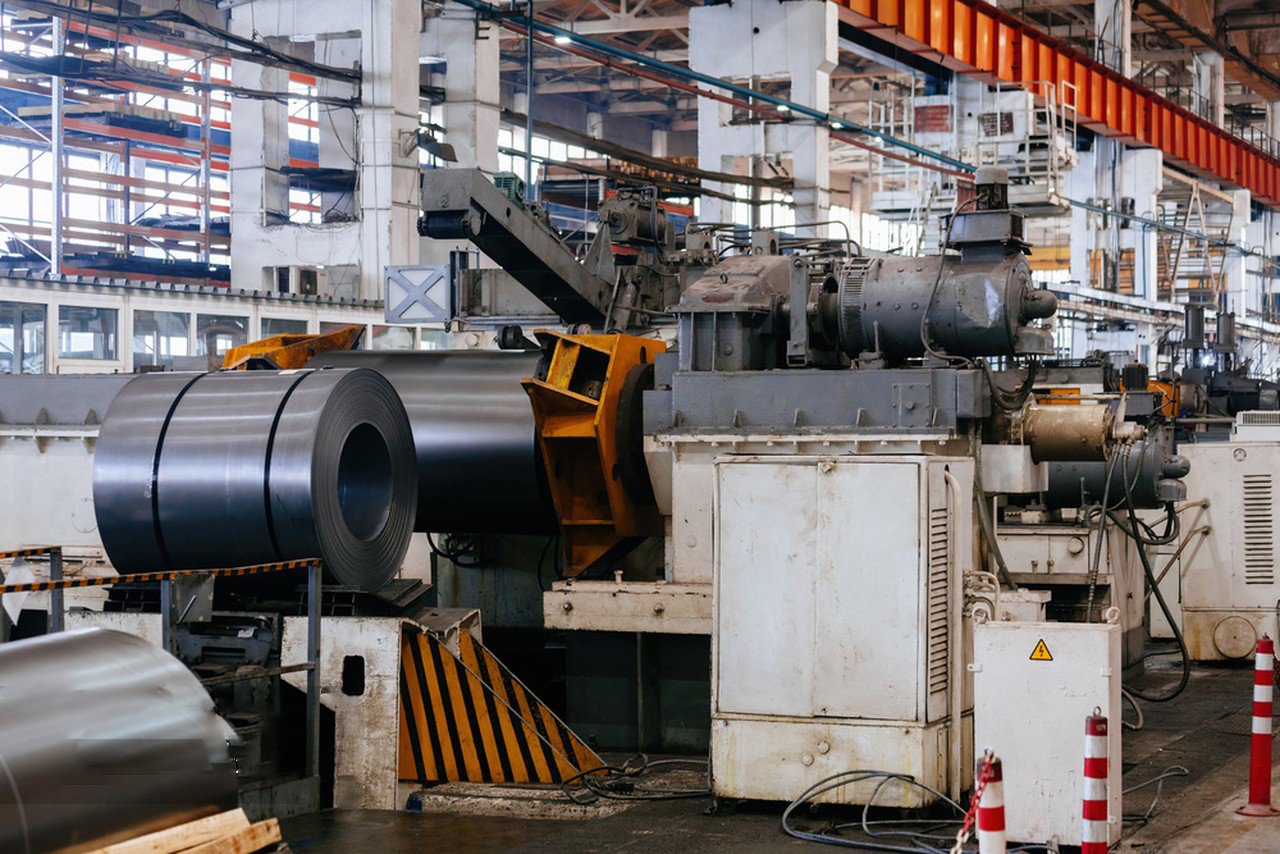
Проверка толщины листа нержавеющей стали и соблюдения допусков - важнейший этап контроля качества в сталелитейной промышленности. Современные методы сочетают традиционную метрологию с передовыми технологиями, чтобы гарантировать соответствие материалов строгим требованиям современных приложений. Компания MFY, имея полностью интегрированную цепочку поставок, включающую НИОКР, производство и продажи, принимает самое активное участие во внедрении и совершенствовании этих методов измерения. Наши целевые клиенты, включая производственные компании, инженерные и строительные подрядчики, дистрибьюторов и интеграторов оборудования, полагаются на точность предоставляемых нами данных о толщине. В этом разделе мы рассмотрим общие инструменты и методы, используемые для измерения, углубимся в сложные автоматизированные поточные системы, применяемые на современных прокатных станах, и обсудим роль статистического контроля процессов (SPC) в поддержании постоянной толщины. Во время посещения наших производственных предприятий и предприятий наших партнеров я на собственном опыте убедился, что приверженность точным измерениям напрямую приводит к повышению качества продукции и удовлетворенности клиентов. Например, клиент компании MFY, занимающейся интеграцией оборудования и проектированием прецизионных машин, полагается на гарантию жестких допусков по толщине, которые мы можем гарантировать только благодаря тщательному и надежному измерению на каждом этапе.
Общие средства и методы измерений
Наиболее фундаментальным и широко используемым инструментом для измерения толщины листа нержавеющей стали, особенно при выборочных проверках и контроле качества, является микрометр. Распространены как ручные (верньерные или аналоговые), так и цифровые микрометры. Цифровые микрометры отличаются простотой считывания и зачастую возможностью вывода данных, что снижает вероятность человеческой ошибки при записи. Эти приборы работают путем точного измерения расстояния между двумя наковальнями, которые приводятся в контакт с поверхностями листов. Для получения точных показаний наковальни должны быть чистыми, плоскими и параллельными, а микрометр необходимо регулярно калибровать по сертифицированным калибровочным блокам. В компании MFY наши специалисты по контролю качества обучены правильному использованию калиброванные микрометры5 для проверки готовых листов перед отправкой, чтобы убедиться, что они соответствуют заданному стандарту (например, ASTM, EN или JIS), запрашиваемому клиентами в Индии или Юго-Восточной Азии. Обычно измерения проводятся в нескольких точках по ширине и длине листа, чтобы оценить общую согласованность и выявить любые отклонения, такие как "корона" (толщина в центре) или "клин" (сужающаяся толщина).
Ультразвуковые толщиномеры - еще один ценный инструмент, особенно для неразрушающего контроля, когда доступ к обеим сторонам листа может быть ограничен, или для измерения толщины после формовки или нанесения покрытия. Эти приборы посылают ультразвуковой импульс через материал и измеряют время, необходимое для возвращения эха от задней поверхности. Зная скорость звука в конкретной марке нержавеющей стали (которая может варьироваться, поэтому калибровка для данного материала является ключевым моментом), измеритель рассчитывает толщину. Несмотря на общую точность, на точность ультразвуковых датчиков могут влиять шероховатость поверхности, микроструктура материала и температура. Они очень полезны для полевых проверок инженерных и строительных подрядчиков или для проверки уже установленного материала. Компания MFY может использовать их для дополнительных проверок или при оценке материала, когда прямой доступ к микрометру затруднен.
Профилометры, хотя и менее распространены для рутинной проверки толщины, могут использоваться для высокодетального анализа поверхности и изменений толщины, особенно в научно-исследовательских учреждениях или в приложениях, требующих исключительной плоскостности и равномерной толщины. Эти приборы проводят щупом или оптическим датчиком по поверхности листа, создавая профиль с высоким разрешением. Несмотря на то, что они предоставляют богатые данные, они медленнее и более специализированны, чем микрометры или ультразвуковые датчики для общей проверки толщины. Выбор инструмента часто зависит от требуемой точности, стадии производства или контроля, объема проверяемого материала и доступности.
Автоматизированные системы измерения на линии в современных мельницах
На современных прокатных станах для нержавеющей стали, включая те, которые входят в состав Передовые производственные возможности MFY6Автоматизированные поточные измерительные системы незаменимы для поддержания жестких допусков по толщине при высокоскоростном производстве. Эти системы обеспечивают непрерывный мониторинг толщины листа в режиме реального времени по мере его выхода из прокатных клетей, что позволяет немедленно скорректировать параметры стана при обнаружении отклонений от заданной толщины. К распространенным технологиям относятся рентгеновские толщиномеры и лазерные толщиномеры. Рентгеновские толщиномеры работают путем пропускания контролируемого рентгеновского луча через лист; количество поглощенного излучения пропорционально толщине и плотности материала. Измеряя ослабленный луч, система рассчитывает толщину с высокой точностью, часто с точностью до нескольких микрон.
В лазерных толщиномерах обычно используется пара лазерных датчиков смещения, расположенных один над, а другой под движущимся стальным листом. Каждый датчик измеряет расстояние до соответствующей поверхности. Разница между этими двумя измерениями в сочетании с известным расстоянием между датчиками дает значение толщины листа. Эти бесконтактные системы идеально подходят для суровых условий прокатного стана, на них не влияют температура материала и незначительные загрязнения поверхности. Данные, полученные с помощью этих поточных систем, используются не только для непосредственного управления процессом (Automatic Gauge Control - AGC), но и регистрируются, создавая подробный профиль толщины для каждого рулона или партии листов. Это обеспечивает превосходную прослеживаемость и документацию по качеству, что высоко ценится клиентами MFY, такими как производственные компании, которым требуется стабильный материал для автоматизированных производственных линий.
Интеграция этих автоматизированных систем требует значительных инвестиций, но дает существенные преимущества в плане качества продукции, экономии материалов (за счет минимизации нестандартного производства) и операционной эффективности. Стремление MFY к инновационному развитию включает в себя использование таких технологий для обеспечения соответствия наших листов из нержавеющей стали все более строгим требованиям наших клиентов по всему миру. Например, наша способность поставлять листы с очень жесткими допусками для специализированных применений в электронной или автомобильной промышленности в значительной степени зависит от точности этих систем измерения и контроля на линии. Этот непрерывный цикл обратной связи является отличительной чертой современного производства высококачественной стали.
Статистический контроль процесса (SPC) при контроле толщины
Статистический контроль процессов (SPC) - это важнейшая методология, применяемая в отрасли производства нержавеющей стали для мониторинга и контроля производственного процесса, обеспечивающего постоянную толщину листа и соблюдение допусков. SPC предполагает использование статистических инструментов и методов для анализа данных процесса, выявления источников отклонений и реализации корректирующих действий для поддержания стабильности и работоспособности процесса. В контексте толщины листа данные, полученные с помощью поточных манометров или регулярных проверок микрометром, наносятся на контрольные диаграммы (например, диаграммы X-bar и R или X-MR). Эти графики помогают провести различие между отклонениями по общим причинам (присущим любому процессу) и отклонениями по особым причинам (обусловленными конкретными, идентифицируемыми факторами, такими как износ инструмента, несоответствие материала или ошибка оператора).
Отслеживая эти контрольные графики, производственные и качественные специалисты MFY могут обнаружить тенденции или точки выхода за пределы контроля, которые указывают на то, что процесс может сдвинуться или стать нестабильным. Например, постепенная тенденция к увеличению средней толщины может свидетельствовать о прогрессирующем износе валков, что побуждает к плановому техническому обслуживанию до превышения допусков. Аналогичным образом, внезапный скачок вариабельности может указывать на проблемы с качеством сырья или неисправность прокатного стана. Такой упреждающий подход позволяет нам решать потенциальные проблемы до того, как они приведут к производству несоответствующего материала, тем самым сокращая количество брака и повторной обработки, а также обеспечивая постоянное соответствие листов, поставляемых нашим клиентам, например, инженерному подрядчику в России, их спецификациям.
Эффективное внедрение SPC требует приверженности сбору данных, анализу и постоянному совершенствованию, что полностью соответствует таким ценностям MFY, как гибкость, устойчивость и постоянное развитие. Данные, полученные с помощью SPC, не только помогают поддерживать текущий уровень качества, но и предоставляют ценные сведения для оптимизации и совершенствования процессов. Например, анализируя данные SPC, наши научно-исследовательские и производственные команды могут выявить возможности для ужесточения контроля над процессом, что в перспективе позволит предлагать еще более жесткие допуски по толщине. Такой подход к обеспечению качества, основанный на данных, является ключевым компонентом стратегии MFY по предоставлению высококачественной продукции и универсальных решений для наших глобальных клиентов.
Цифровые микрометры уменьшают человеческий факторПравда
Цифровые микрометры обеспечивают более удобное считывание и вывод данных по сравнению с ручными микрометрами, что сводит к минимуму ошибки при записи.
Ультразвуковые датчики работают с любыми материаламиЛожь
Ультразвуковые датчики требуют калибровки для определенных марок нержавеющей стали, поскольку скорость звука зависит от состава материала.
Трудности, связанные с поддержанием постоянной толщины и допусков в процессе производства
Различия в толщине листов нержавеющей стали доставляют вам производственные проблемы и приводят к отходам материала? Такие несоответствия часто являются следствием сложных производственных проблем. Понимание этих проблем, над решением которых активно работает MFY, помогает оценить ценность поставщик, ориентированный на качество7.
Поддержание постоянной толщины листа из нержавеющей стали является сложной задачей из-за таких факторов, как неравномерный износ валков, колебания температуры во время прокатки, изменение свойств сырья (твердость, состав), динамические отклонения клети стана и точный контроль, необходимый для высокоскоростных непрерывных процессов.
Поиск идеально одинаковой толщины при производстве листов из нержавеющей стали - это постоянная борьба с множеством сложных переменных. В компании MFY мы используем комплексный подход, начиная с поиска сырья через наше торговое подразделение и заканчивая точной холодной прокаткой и отделкой, что дает нам уникальную возможность взгляд на эти проблемы8. Мы понимаем, что для наших клиентов, будь то производитель в Индии, нуждающийся в однородном материале для глубокой вытяжки, или интегратор оборудования на Ближнем Востоке, требующий точных компонентов, любое отклонение в толщине может иметь значительные последствия. Однажды я посетил предприятие клиента, где у него были проблемы со старой прессовой линией; несоответствующая толщина листов от предыдущего поставщика приводила к повреждению штампа и недопустимому расхождению деталей. После перехода на листы MFY, изготовленные с особым вниманием к решению этих неотъемлемых проблем, они заметили заметное улучшение стабильности производства и снижение затрат на оснастку. Это подчеркивает, почему решение этих производственных проблем является центральным элементом нашей миссии по поставке высококачественной и надежной продукции из нержавеющей стали.

Достижение и поддержание постоянной толщины и жестких допусков при производстве листов из нержавеющей стали - сложная инженерная задача, чреватая неизбежными проблемами. Несмотря на развитие технологий, физика деформации металла и сложности крупносерийного производства постоянно создают препятствия. Благодаря глубокому опыту компании MFY в области производства нержавеющей стали, охватывающему научно-исследовательские и опытно-конструкторские работы и производство, мы постоянно работаем над пониманием и смягчением этих проблем. Наша приверженность инновациям позволяет нам решать эти проблемы, гарантируя, что листы из нержавеющей стали, которые мы поставляем на различные рынки, отвечают высоким требованиям наших клиентов. В этом разделе мы рассмотрим тонкости процесса холодной прокатки и его переменные, обсудим специфические проблемы материала, такие как закалка, а также рассмотрим роль ограничений и обслуживания оборудования в стремлении к постоянству толщины. Один из клиентов компании-производителя однажды поделился со мной, что до начала работы с MFY их самым большим разочарованием было непредсказуемое изменение толщины получаемых листов, что серьезно влияло на работу их автоматизированных сварочных линий. Это подчеркивает реальные последствия неэффективного управления этими производственными проблемами.
Процесс холодной прокатки и его параметры
Процесс холодной прокатки является основным для производства листов из нержавеющей стали с точная толщина9 и улучшение качества поверхности. Этот процесс включает в себя прохождение горячекатаной и отожженной полосы из нержавеющей стали (сырье для этого этапа) через ряд валков при комнатной температуре. Каждый проход уменьшает толщину полосы и удлиняет ее. Несмотря на кажущуюся простоту, на конечную толщину и ее постоянство могут влиять многочисленные переменные. Давление валков, или сила прокатки, прикладываемая рабочими валками, является основным фактором. Однако просто установить давление недостаточно, поскольку сама клеть стана может отклоняться под нагрузкой (растяжение стана), что приводит к отклонениям. На современных станах используются сложные системы автоматического контроля (AGC), которые непрерывно измеряют толщину выхода и за миллисекунды регулируют зазор между валками или давление для компенсации. В компании MFY наши установки холодной прокатки оснащены такими передовыми системами управления, что крайне важно для удовлетворения жестких требований к допускам наших разнообразных клиентов, от обычных производителей до специализированных изготовителей.
Другие критические переменные включают скорость прокатки, межклетевое натяжение (на тандемных станах) и смазку. Более высокая скорость может привести к тепловому расширению валков (термическая корона) и полосы, что влияет на профиль толщины. Натяжение, прикладываемое к полосе между клетями, помогает стабилизировать процесс и контролировать толщину и плоскостность. Смазка необходима не только для снижения трения и износа валков, но и для управления тепловыделением. Тип и нанесение смазки должны точно контролироваться. Любое несоответствие этих параметров может привести к изменению толщины по длине или ширине листа. Например, производственные команды MFY уделяют пристальное внимание температурным профилям валков, часто используя системы направленного охлаждения для поддержания стабильной формы валков, что необходимо для производства листов с равномерной толщиной для клиентов, которым требуется материал для сложных применений, например, в автомобильной промышленности или производстве бытовой техники на таких рынках, как Юго-Восточная Азия.
Кроме того, значительную роль играет исходное состояние горячекатаной полосы, включая ее толщину и металлургические свойства. Изменения в поступающем материале должны быть компенсированы станом холодной прокатки, что добавляет еще один уровень сложности. Интегрированная цепочка поставок MFY, включающая торговлю сырьем и иногда даже влияние на стадию горячей прокатки некоторых видов продукции, дает нам преимущество в управлении постоянством исходного материала для наших станов холодной прокатки, тем самым повышая нашу способность производить стабильно высококачественные готовые листы.
Проблемы, связанные с конкретным материалом (например, упрочнение при работе)
Различные марки нержавеющей стали ведут себя по-разному во время холодной прокатки, создавая уникальные проблемы для поддержания постоянства толщины. Одним из наиболее значимых явлений, характерных для конкретного материала, является закалка (или деформационное упрочнение). Аустенитные нержавеющие стали, такие как популярные марки 304 и 31610 которые MFY поставляет в большом количестве, особенно склонны к быстрому упрочнению. Это означает, что по мере деформации материала валками его твердость и прочность значительно возрастают, что делает дальнейшее уменьшение толщины все более сложным. Для этого требуются все более высокие усилия прокатки, что может усугубить такие проблемы, как износ валков и прогиб стана. Скорость упрочнения также может меняться в зависимости от температуры и степени деформации, что добавляет еще одну динамическую переменную для контроля.
Ферритные нержавеющие стали (например, марка 430) обычно имеют более низкую скорость закалки по сравнению с аустенитными марками, что делает их несколько более легкими для холодной прокатки с жесткими допусками в плане требуемого усилия. Однако при этом могут возникать другие проблемы, связанные с формоустойчивостью или характеристиками поверхности. Дуплексные нержавеющие стали, имеющие смешанную аустенитно-ферритную микроструктуру, сочетают высокую прочность с хорошей коррозионной стойкостью, но их поведение при прокатке является сложным из-за того, что две фазы деформируются по-разному. Научно-исследовательские и производственные команды MFY используют свое глубокое понимание специфики поведения этих материалов для оптимизации графиков прокатки (последовательности и величины уменьшения толщины за один проход) для каждого сорта. Такой индивидуальный подход имеет решающее значение для достижения желаемой конечной толщины и механических свойств при сохранении точности размеров.
Сложность закалки заключается также в том, что любые несоответствия в закалке или твердости исходного материала могут привести к увеличению разницы в толщине конечного продукта. Например, если один участок рулона немного тверже другого, он будет сильнее сопротивляться деформации, что может привести к увеличению толщины участка, если только система AGC не является исключительно отзывчивой. Именно поэтому MFY уделяет большое внимание качеству и постоянству горячекатаных полос, используемых в качестве сырья для наших станов холодной прокатки. Наш опыт позволяет нам предвидеть и компенсировать эти специфические особенности материала, гарантируя, что листы нержавеющей стали, которые мы поставляем производственным компаниям или инженерным подрядчикам, соответствуют их точным спецификациям по толщине, независимо от марки.
Ограничения и обслуживание оборудования
Возможности и состояние оборудования прокатного стана являются основополагающими для достижения стабильной толщины листа и жестких допусков. Жесткость прокатной клети - критический фактор; клеть, которая чрезмерно прогибается под нагрузкой, будет с трудом поддерживать постоянный зазор между валками, что приведет к отклонениям в толщине. Современные станы рассчитаны на высокую жесткость, но даже самое лучшее оборудование имеет свои пределы. Точность и отзывчивость датчиков (для измерения толщины, натяжения, температуры) и исполнительных механизмов (для регулировки зазора между валками) в системе автоматического контроля толщины (AGC) также имеют первостепенное значение. Если эти компоненты не работают оптимально, способность стана корректировать отклонения в режиме реального времени ставится под угрозу. MFY инвестирует в современные технологии прокатных станов и гарантирует, что наши датчики и системы управления регулярно калибруются и обслуживаются в соответствии с самыми высокими стандартами.
Износ валков - еще одна серьезная проблема. В процессе прокатки рабочие валки подвергаются огромному давлению и абразивному износу. По мере износа валков изменяется их профиль, что может напрямую повлиять на толщину листа (например, вызвать "корону" или утяжеление по центру). Для поддержания правильной геометрии валков необходима точная шлифовка валков. Валки необходимо регулярно шлифовать или заменять, а качество самого процесса шлифования должно быть безупречным. Компания MFY осуществляет строгие программы управления валками, включая сложные установки и графики шлифования валков, чтобы гарантировать, что наши рабочие валки всегда находятся в оптимальном состоянии. Такое внимание к деталям жизненно важно для производства листов с равномерной толщиной по всей ширине, что является ключевым требованием для таких клиентов, как дистрибьюторы, которым необходимо поставлять однородный материал для своей разнообразной клиентской базы.
Проактивное и тщательное техническое обслуживание всего комплекса прокатных станов является обязательным условием. Сюда входят не только валки и системы управления, но и подшипники, приводные двигатели, системы смазки и гидравлические системы. Любой незапланированный простой или неоптимальная работа этих компонентов может нарушить хрупкий баланс, необходимый для точной прокатки. Философия MFY, основанная на инновационных разработках, распространяется и на практику технического обслуживания, где мы используем методы прогнозируемого обслуживания и непрерывный мониторинг, чтобы свести к минимуму неожиданные проблемы и обеспечить работу нашего оборудования с максимальной эффективностью. Это стремление к совершенству оборудования является краеугольным камнем нашей способности постоянно соблюдать сложные допуски по толщине для наших листов из нержавеющей стали.
| Распространенный дефект толщины | Описание | Потенциальные производственные причины |
|---|---|---|
| Центральная застежка / корона | Лист толще в центре, чем по краям | Неправильная коронка валков, неравномерное тепловое расширение валков, неравномерный профиль входящей полосы. |
| Волна по краям / Волнистые края | Края листа длиннее центра | Чрезмерный изгиб валков, неправильная коронка валков, неравномерное охлаждение, чрезмерное уменьшение по краям. |
| Застежка на четверть | Смятие или волнистость между центром и краем | Локальная перепрокатка, проблемы с профилем валков или смещение промежуточных валков (на станах 6-валковой прокатки). |
| Толщина Конусность | Постепенное изменение толщины по ширине листа | Несогласованные валки, неравномерный износ валков, асимметричный профиль температуры в валках. |
| Манометрические ленты | Периодические изменения толщины по длине | Эксцентриситет валков, вибрации в клети мельницы, проблемы с управлением приводным двигателем. |
Износ валков влияет на равномерность толщиныПравда
По мере износа валков в процессе холодной прокатки их профиль меняется, что приводит к изменению толщины листа по ширине.
Все марки нержавеющей стали одинаково закаляютсяЛожь
Аустенитные марки, такие как 304, затвердевают быстрее, чем ферритные марки, такие как 430, что требует различных подходов к прокатке для контроля толщины.
Стратегии для производителей по обеспечению соответствия стандартам толщины
Беспокоитесь о том, что ваш лист из нержавеющей стали может не соответствовать важнейшим стандартам толщины, рискуя целостностью вашего проекта? Несоблюдение требований может привести к дорогостоящему отказу и нанести ущерб вашей репутации. Внедрение надежных стратегий качества, как это делает компания MFY, является ключом к надежному материалу.
Производители обеспечивают соответствие стандартам толщины путем строгого внедрения систем менеджмента качества (СМК), таких как ISO 9001, использования передового технологического контроля (APC) на прокатных станах, тщательного контроля сырья, регулярной калибровки и обслуживания оборудования, а также всестороннего обучения сотрудников.
Обеспечение неукоснительного соблюдения стандартов толщины листа из нержавеющей стали является краеугольным камнем надежного производства, и в компании MFY это обязательство соблюдается во всей нашей интегрированной цепочке поставок. Для наших клиентов - от интеграторов высокоточного оборудования до крупных инженерных и строительных подрядчиков - уверенность в том, что материал соответствует требованиям, имеет первостепенное значение. Это означает предсказуемость характеристик, беспрепятственную интеграцию в технологические процессы и, в конечном счете, успех их продукции и проектов. Я часто обсуждал с клиентами, например, с производственной компанией в Юго-Восточной Азии, выпускающей компоненты для автомобильной промышленности, как наш многоуровневый подход к качеству дает им душевное спокойствие. Они знают, что MFY не просто полагается на окончательный контроль; мы обеспечиваем качество на каждом этапе, начиная с выбора сырья и заканчивая окончательной отгрузкой. Эта целостная стратегия включает в себя не только передовые технологии, но и культуру осознания качества, которая формируется благодаря постоянному обучению и соблюдению международно признанных принципов СМК. Такая активная позиция необходима для того, чтобы ориентироваться в сложностях производства стали и стабильно поставлять соответствующую требованиям продукцию на такие требовательные рынки, как Россия или Ближний Восток.

Для таких производителей нержавеющей стали, как MFY, обеспечение постоянного соответствия разнообразным и строгим стандартам толщины - не просто цель, а основной производственный императив. Применяемые стратегии многогранны и включают в себя синергетическое сочетание надежных систем управления, передовых технологий, тщательного контроля материалов и квалифицированной рабочей силы. Наши клиенты, будь то дистрибьюторы в Индии, нуждающиеся в надежных запасах, или производственные компании в Китае, интегрирующие наши листы в свои производственные линии, зависят от этого соответствия для своего успеха. В этом разделе мы рассмотрим важнейшие стратегии, которые применяют ведущие производители, включая внедрение комплексных систем управления качеством (СМК), использование передовых методов управления технологическими процессами (APC) и автоматизации в процессе фрезерования, а также решающую роль тщательного контроля сырья и сотрудничества с поставщиками. Я лично наблюдал, как эти стратегии, когда они добросовестно применяются в работе MFY, приносят ощутимые выгоды нашим клиентам, такие как снижение вариабельности, улучшение характеристик продукции и повышение доверия. Один из клиентов - инженерный подрядчик, реализующий крупный инфраструктурный проект, выбрал MFY именно из-за нашей очевидной приверженности этим стратегиям соблюдения требований, что дало ему уверенность, необходимую для такого важного применения.
Внедрение надежных систем менеджмента качества (СМК)
Краеугольным камнем стратегии обеспечения соответствия стандартам толщины является внедрение и тщательное поддержание надежной Система менеджмента качества (СМК)11часто сертифицирована по международным стандартам, таким как ISO 9001. СМК представляет собой систематизированную основу для управления процессами организации с целью последовательного выполнения требований заказчиков и регулирующих органов. Для производителя листов из нержавеющей стали, такого как MFY, это означает создание четких процедур для каждого этапа, влияющего на толщину: от рассмотрения заказа (для правильного понимания указанных стандартов и допусков) и закупки сырья, через процесс холодной прокатки, до окончательного контроля, упаковки и отгрузки. Ключевые элементы нашей СМК включают в себя документированные процедуры измерения толщины, графики калибровки оборудования, критерии приемки и отбраковки материала, а также процессы обработки несоответствий и реализации корректирующих и предупреждающих действий (CAPA).
Внутренние аудиты и регулярные проверки руководства являются неотъемлемой частью СМК в компании MFY. Эти мероприятия помогают нам оценить эффективность наших процессов, выявить области для улучшения и обеспечить постоянное соответствие как внешним стандартам (таким как ASTM, EN, JIS), так и нашим собственным внутренним стандартам качества, которые часто устанавливаются даже жестче, чем отраслевые нормы. Прослеживаемость - еще один важнейший аспект, заложенный в нашу СМК. Каждый рулон и партия листов тщательно отслеживаются на протяжении всего производственного процесса, привязываясь к конкретным температурам сырья, параметрам обработки и измерениям контроля качества. Такая всесторонняя прослеживаемость позволяет нам быстро расследовать любые проблемы в случае их возникновения и дает нашим клиентам, например, производственным компаниям, которым необходимы подробные сертификаты материалов для собственных систем качества, полную уверенность в родословной продукта.
Кроме того, СМК способствует формированию культуры качества во всей организации. Это не просто набор документов, это привитие ответственности за соблюдение стандартов каждому сотруднику, от операторов комбината до инспекторов качества. В MFY регулярно проводятся программы обучения по конкретным стандартам, методам измерений и процедурам СМК. Такой комплексный подход гарантирует, что соблюдение стандартов - это не просто забота, а неотъемлемая часть нашей повседневной деятельности, напрямую поддерживающая видение MFY стать ведущим международным торговым и сервисным брендом, известным своим качеством и надежностью.
Передовое управление технологическими процессами (APC) и автоматизация
Использование Передовой контроль процессов (APC)12 и автоматизация прокатных станов - важнейшая технологическая стратегия, обеспечивающая постоянную толщину листа и строгое соблюдение допусков. Современные станы холодной прокатки, такие как используемые MFY, оснащены сложными системами APC, которые выходят за рамки базового автоматического контроля калибров (AGC). Эти системы часто включают в себя сложные математические модели процесса прокатки, алгоритмы прогнозирования и обратную связь в реальном времени от множества датчиков, измеряющих толщину, натяжение, температуру, скорость и силу валков. Это позволяет стану проактивно регулировать параметры процесса, чтобы противодействовать возмущениям и поддерживать заданную толщину с удивительной точностью. Например, если встроенный рентгеновский или лазерный датчик обнаруживает даже незначительное отклонение от заданного значения, система APC может мгновенно отрегулировать зазор между валками, межклетевое натяжение или скорость прокатки, чтобы вернуть толщину в заданное значение в течение миллисекунд.
Автоматизация распространяется и на другие аспекты процесса прокатки, влияющие на постоянство толщины, например, автоматизированные системы замены валков, обеспечивающие быструю и точную замену изношенных валков, и автоматизированные системы смазки, оптимизирующие применение охлаждающих и смазочных жидкостей. Некоторые передовые станы даже изучают возможности использования искусственного интеллекта (AI) и машинного обучения (ML) для дальнейшего улучшения управления процессом. Эти системы ИИ/МЛ могут анализировать огромные объемы исторических данных процесса для выявления тонких закономерностей и корреляций, которые могут быть неочевидны для операторов-людей, что позволяет разрабатывать более точные стратегии управления и даже прогнозировать потенциальные отклонения. Приверженность MFY принципу "инновационного развития" означает, что мы постоянно изучаем и внедряем такие передовые технологии для расширения наших производственных возможностей и обеспечения соответствия наших листов из нержавеющей стали постоянно растущей точности, требуемой нашими глобальными клиентами, включая интеграторов оборудования, которым требуются компоненты с минимальной размерной вариативностью.
Данные, генерируемые этими APC и автоматизированными системами, также бесценны для постоянного совершенствования. Подробные журналы параметров процесса и результирующие профили толщины для каждого рулона представляют собой богатый набор данных для анализа. Эти данные можно использовать для оптимизации графиков прокатки для различных сортов и размеров, точной настройки алгоритмов управления и выявления областей, где дальнейшие инвестиции в технологию или усовершенствование процесса могут обеспечить еще более высокую стабильность толщины. Такой подход, основанный на данных, является основой стратегии MFY по сохранению конкурентного преимущества в производстве высококачественного листа из нержавеющей стали.
Контроль сырья и сотрудничество с поставщиками
Принцип "мусор на входе, мусор на выходе" очень верен в производстве листов из нержавеющей стали; качество и постоянство исходного сырья (обычно горячекатаных и отожженных полос или рулонов нержавеющей стали) оказывают прямое и значительное влияние на возможность достижения стабильной конечной толщины и допусков. Поэтому важнейшей стратегией для таких производителей, как MFY, является тщательный контроль поступающего сырья и установление прочных отношений сотрудничества с нашими поставщиками. Уникальное положение MFY как диверсифицированной группы компаний с подразделением по торговле сырьем из нержавеющей стали дает нам явное преимущество в этом отношении. Мы обладаем большим контролем и возможностью отслеживать качество сырья.
Проверка начинается с четко определенных спецификаций на поступающие горячекатаные рулоны, включая допуски на размеры (толщина, ширина, корона), химический состав, механические свойства и состояние поверхности. После получения материалы подвергаются тщательному контролю и испытаниям. Это может включать в себя проверку размеров, химический анализ и испытания на твердость, чтобы убедиться в соответствии нашим строгим внутренним стандартам, которые часто превышают общепринятые отраслевые нормы. Любое отклонение в исходном материале может создать значительные проблемы в процессе холодной прокатки. Например, чрезмерная корона или клин в горячей ленте потребуют более агрессивных и сложных мер контроля на стане холодной прокатки для исправления, что может повлиять на конечную однородность толщины.
Сотрудничество с поставщиками сырья не менее важно. Тесное сотрудничество с нашими партнерами по станам горячей прокатки (или собственными интегрированными предприятиями, где это возможно) позволяет нам сообщать о наших конкретных потребностях и предоставлять отзывы о характеристиках материалов. Такой совместный подход может привести к улучшению консистенции горячекатаного продукта, что, в свою очередь, упрощает процесс холодной прокатки и повышает качество конечного листа. Для MFY эта синергия в рамках полностью интегрированной цепочки поставок гарантирует, что мы начинаем с самого лучшего сырья, что является основополагающим шагом в нашей стратегии, направленной на постоянную поставку листов из нержавеющей стали, которые отвечают точным требованиям по толщине наших взыскательных клиентов, таких как инженерные и строительные подрядчики, которые зависят от надежности материала при реализации критически важных проектов. Такой целостный контроль над цепочкой поставок является ключевым конкурентным преимуществом MFY.
СМК обеспечивает соблюдение толщиныПравда
Системы управления качеством, такие как ISO 9001, обеспечивают систематические процедуры для поддержания постоянных стандартов толщины на протяжении всего производства.
Только окончательный контроль гарантирует качествоЛожь
Качество должно быть заложено в каждый этап производства, а не только проверяться при финальной инспекции, как подчеркивает многоуровневый подход MFY.
Технические предложения по повышению точности измерений в листах из нержавеющей стали
Приводят ли незначительные неточности в измерениях толщины листов нержавеющей стали к незамеченным нарушениям нормативных требований или неэффективности процесса? Даже незначительные ошибки могут накапливаться, влияя на качество. Внедрение передовых методов измерения и лучших практик, которым MFY уделяет постоянное внимание, является жизненно важным для достижения истинной точности.
Чтобы повысить точность измерений для листов из нержавеющей стали, используйте регулярно калибруемые манометры высокого разрешения (например, микрометры до 0,001 мм), внедряйте протоколы многоточечных измерений по всему листу, тщательно контролируйте факторы окружающей среды, такие как температура во время измерений, обеспечьте всестороннее обучение оператора и рассмотрите возможность использования передовых бесконтактных оптических или лазерных систем.
В стремлении к безупречному качеству листов из нержавеющей стали точность измерения толщины не подлежит обсуждению. В компании MFY мы понимаем, что даже самые передовые производственные процессы могут быть подорваны, если методы, используемые для проверки их результатов, несовершенны. Поэтому постоянное внимание к повышению точности измерений является неотъемлемой частью нашей философии обеспечения качества. Это выгодно всем нашим целевым клиентам - от дистрибьюторов, которым необходимо гарантировать соответствие спецификаций продаваемой ими продукции MFY, до интеграторов оборудования, создающих прецизионные машины, требующие компонентов с точными размерами. Технические достижения в области метрологии в сочетании с жесткой процедурной дисциплиной открывают путь к повышению точности. Я видел, как инвестиции в улучшение процедур калибровки или обучение нашей команды контроля качества нюансам работы нового высокоточного измерительного прибора могут напрямую привести к получению более надежных данных, что, в свою очередь, способствует более жесткому контролю процесса и, в конечном счете, созданию более качественной продукции для таких рынков, как Индия, Юго-Восточная Азия или Россия.
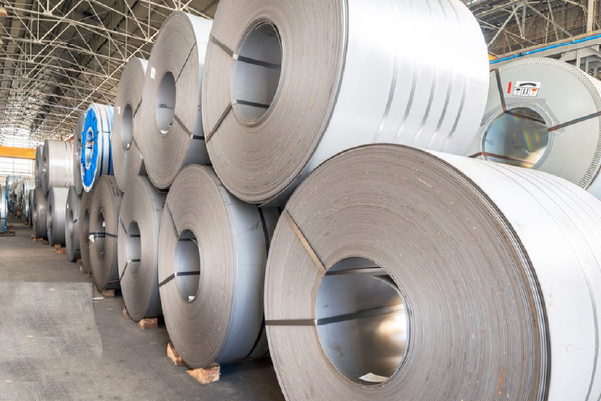
Достижение высочайшего уровня точности при измерении толщины листов нержавеющей стали - это техническая задача, требующая внимания к деталям по нескольким направлениям: сами приборы, процедуры их использования, условия, в которых проводятся измерения, и мастерство персонала. Для компании MFY, стремящейся стать ведущим международным торговым и сервисным брендом в китайской индустрии нержавеющей стали, расширение границ точности измерений является частью нашего стремления к совершенству. В этом разделе мы предложим технические рекомендации по повышению точности измерений, расскажем о передовых методах калибровки и прослеживаемости, изучим передовые технологии бесконтактных измерений, а также подчеркнем важность контроля окружающей среды и повышения квалификации операторов. Эти предложения актуальны не только для производителей стали, но и для конечных пользователей, выполняющих входной контроль или проверку качества. Я вспоминаю разговор с клиентом-производителем, который внедрил некоторые из этих передовых протоколов измерений после консультации с нашей технической группой MFY, что привело к значительному сокращению расхождений, с которыми они ранее сталкивались при определении характеристик материала.
Передовые методы калибровки и прослеживаемость к стандартам
Основой точного измерения толщины является тщательная и регулярная калибровка всех измерительных приборов. Микрометр, ультразвуковой калибр или встроенный датчик, каким бы сложным он ни был, будут давать ошибочные данные, если их не откалибровать должным образом. Согласно передовой практике, калибровка должна проводиться с использованием сертифицированных стандартных образцов или измерительных блоков, прослеживаемых по национальным или международным стандартам измерений (например, по стандартам NIST в США, PTB в Германии или NPL в Великобритании). Такая непрерывная цепочка прослеживаемости гарантирует, что измерения будут последовательными и сопоставимыми в разных местах и организациях. В MFY наша внутренняя калибровочная лаборатория и процедуры гарантируют, что все наши измерительные приборы, от ручных микрометров, используемых инспекторами ОТК, до сложных датчиков на прокатных станах, калибруются через определенные промежутки времени по прослеживаемым стандартам. Записи об этих калибровках тщательно ведутся в рамках нашей СМК, сертифицированной по стандарту ISO 9001.
Процесс калибровки не должен быть простой формальностью. Он включает в себя проверку точности прибора в нескольких точках диапазона измерений. Например, микрометр может быть проверен по нескольким измерительным блокам разной, точно известной толщины. Любое обнаруженное отклонение должно быть зафиксировано, и если оно превышает допустимые пределы, прибор необходимо отрегулировать, отремонтировать или заменить. Частота калибровки зависит от использования прибора, его стабильности и критичности измерений. Для измерительных приборов с высокой степенью использования или критического применения проверка калибровки может проводиться ежедневно или даже перед каждой сменой. Кроме того, необходимо контролировать и регистрировать условия окружающей среды во время калибровки, особенно температуру, поскольку тепловое расширение может повлиять как на прибор, так и на эталоны.
Инвестиции в высококачественные эталоны и поддержание контролируемой среды для калибровки имеют ключевое значение. Для клиентов MFY, таких как инженерные и строительные подрядчики, которые могут проводить проверку толщины материала на месте, понимание и настаивание на материалах, сертифицированных с прослеживаемыми измерениями, обеспечивает дополнительный уровень уверенности в соответствии продукта спецификациям проекта. Такое стремление к точности отслеживания является отличительной чертой поставщика, заботящегося о качестве.
Передовые технологии бесконтактных измерений
Несмотря на надежность традиционных контактных измерительных приборов, таких как микрометры, передовые технологии бесконтактных измерений дают значительные преимущества в некоторых областях применения, в частности, для поточного управления технологическими процессами и для измерения тонких или высокополированных поверхностей, где контакт может привести к повреждению или неточности. Лазерные триангуляционные датчики13 являются ярким примером. Эти датчики проецируют лазерное пятно на поверхность листа, а камера фиксирует положение отраженного пятна. Используя принципы триангуляции, датчик с высокой точностью вычисляет расстояние до поверхности. Используя пару таких датчиков (один над, другой под листом), можно определять толщину в режиме реального времени без физического контакта. Компания MFY изучает и внедряет подобные технологии на своих производственных линиях, чтобы добиться непрерывного, высокоскоростного и точного контроля толщины.
Конфокальные хроматические датчики представляют собой еще один передовой бесконтактный оптический метод. Эти датчики используют белый свет и хроматическую аберрацию для измерения расстояния (и, следовательно, толщины, если они используются в паре). Они могут достигать очень высокого разрешения и менее чувствительны к изменениям отражательной способности поверхности по сравнению с некоторыми лазерными системами. Для специализированных применений, требующих высокой точности, или для научно-исследовательских целей такие технологии могут предоставить бесценные данные. Системы на основе рентгеновской флуоресценции (XRF), хотя и используются в основном для измерения толщины покрытия или элементного анализа, также могут быть адаптированы для определенных измерений толщины подложки, особенно в многослойных материалах. К основным преимуществам этих бесконтактных систем относятся высокая скорость измерений, устойчивость к износу (поскольку в контакте с материалом нет движущихся частей) и возможность измерения толщины горячих или быстро движущихся изделий.
Внедрение этих передовых технологий часто требует значительных инвестиций и специальных знаний для эксплуатации и обслуживания. Однако для таких производителей, как MFY, стремящихся к "инновационному развитию", преимущества в виде улучшенного контроля качества, сокращения отходов и более глубокого понимания процесса могут оправдать затраты. Например, подробные профили толщины, создаваемые лазерными или рентгеновскими датчиками непрерывного действия, дают гораздо более полное представление о равномерности толщины по всему рулону, чем периодические ручные измерения, что позволяет более тонко регулировать процесс и обеспечивать более надежный контроль качества для таких клиентов, как производители автомобилей, которые требуют исключительной однородности.
Контроль окружающей среды и повышение квалификации операторов
Часто упускаются из виду, но критически важны для точности измерений факторы окружающей среды и квалификация персонала, выполняющего измерения. Температура является первоочередной проблемой. Нержавеющая сталь, как и все металлы, расширяется и сжимается при изменении температуры. Стандартная температура для измерений размеров обычно составляет 20°C (68°F). Если измерения проводятся при значительно отличающихся температурах, тепловое расширение как листового материала, так и самого измерительного прибора может внести погрешности. Для высокоточных измерений необходимо либо проводить их в среде с контролируемой температурой, либо применять соответствующие температурные поправочные коэффициенты. В компании MFY критические измерения в наших лабораториях проводятся в условиях контролируемой температуры и влажности.
Вибрации также могут повлиять на точность чувствительных измерительных приборов, особенно тех, которые используются в лабораторных условиях или в поточных системах с высоким разрешением. Важно обеспечить изоляцию измерительных станций от источников вибрации (например, тяжелого оборудования). Еще одним фактором является чистота; грязь или мусор на поверхности листа или на наковальне микрометра могут привести к ложным высоким показаниям. Правильные процедуры очистки как материала, так и инструментов очень важны.
Наконец, мастерство и подготовка оператора имеют первостепенное значение, особенно при ручных измерениях. Хорошо обученный оператор понимает, как правильно обращаться с прибором, прилагать постоянное измерительное давление (в случае микрометров), выбирать соответствующие точки измерения, а также правильно интерпретировать и записывать показания. MFY вкладывает средства в комплексные программы обучения персонала по контролю качества, охватывающие не только работу с конкретными приборами, но и основные принципы метрологии, понимание стандартов и статистических методов. Человеческий фактор незаменим даже в век автоматизации. Квалифицированный оператор может выявить потенциальные проблемы или аномалии, которые автоматизированная система может пропустить, обеспечивая более высокий уровень общей целостности измерений, что в конечном итоге выгодно всем клиентам MFY благодаря поставке стабильно точных и надежных листов из нержавеющей стали.
Калибровка обеспечивает точность измеренийПравда
Регулярная калибровка по прослеживаемым стандартам необходима для поддержания точности прибора при измерении листов из нержавеющей стали.
Температура не влияет на измеренияЛожь
Температура существенно влияет на точность измерений, поскольку нержавеющая сталь расширяется/сужается при изменении температуры.
Заключение
Освоение диапазонов и допусков толщины листов из нержавеющей стали с помощью надежных стандартов, точных измерений и передовых производственных стратегий имеет жизненно важное значение. Для MFY и наших клиентов это гарантирует целостность материала, эффективность работы и успешное выполнение проектов, требующих качественной стальной продукции по всему миру.
-
Узнайте о международных стандартах, обеспечивающих качество листов из нержавеющей стали. ↩
-
Разберитесь в различных стандартах толщины нержавеющей стали, используемых во всем мире. ↩
-
Изучите роль ASTM в создании стандартов для обеспечения постоянного качества стали. ↩
-
Разберитесь в спецификациях ASTM на плоский прокат из нержавеющей стали. ↩
-
Изучите методы калибровки микрометров для обеспечения точности измерений при контроле качества ↩
-
Откройте для себя производственные технологии, улучшающие контроль толщины на сталелитейных заводах ↩
-
Узнайте о ключевых характеристиках, которые определяют надежного поставщика нержавеющей стали, такого как MFY ↩
-
Узнайте о факторах, влияющих на постоянство толщины листа нержавеющей стали в производстве ↩
-
Узнайте, как процесс холодной прокатки влияет на точность толщины нержавеющей стали ↩
-
Понимание явления закалки при обработке популярных марок нержавеющей стали 304 и 316 ↩
-
Понять роль СМК в поддержании последовательности и стандартов качества. ↩
-
Узнайте, как APC повышает точность и эффективность производственных процессов. ↩
-
Поймите, как бесконтактные системы обеспечивают точные измерения в режиме реального времени ↩
У вас есть вопросы или нужна дополнительная информация?
Свяжитесь с нами, чтобы получить индивидуальную помощь и квалифицированный совет.
